Creating naturalness is probably the most important goal in hair transplantation. At Shapiro Medical Group (SMG) we feel a hair transplant should be so natural that it is undetectable, even under close examination! With skillful use of delicate Follicular Unit (FU’s) grafts this degree of naturalness is possible.
In the early days of hair transplantation, they used large grafts that created the “corn row” look associated with transplants from the past. These large grafts are outdated and no longer used due to their unnatural look. The desire to improve naturalness of hair restoration led to the development and use of progressively smaller grafts. Eventually, physicians observed that when studied under magnification, hair grows in tiny, natural groupings of 1 to 4 hairs called Follicular Units (FU’s). With this observation came the practice of using microscopes to create grafts that kept these natural groupings together. By using these delicate 1-4 hair FU grafts, physicians now had the ability to transplant hair exactly as it grows in nature, creating a natural result. Below are examples of natural hairlines created at SMG with FU graft.
Totally Natural Transplanted Hairlines
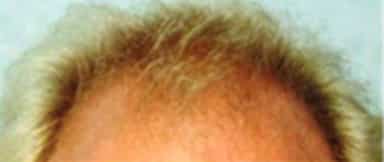
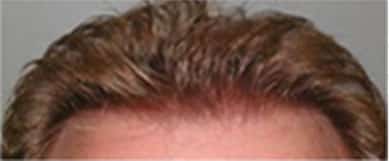
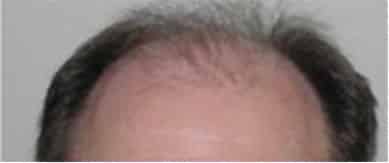
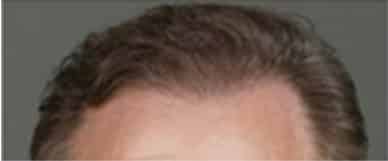
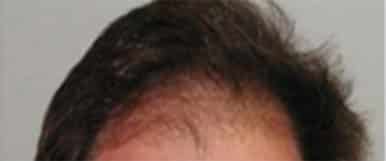
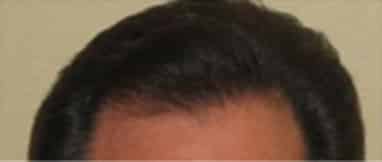
It is important to point out that simply using FU grafts does not guarantee a natural result! Equally important is knowledge of the patterns and distributions of hair found on a natural head of hair. FU grafts must be placed with a deliberate attempt to reproduce these patterns. This is particularly important for the hairline area but holds for all areas where hair loss occurs (crown, midscalp, etc). FU grafts can be looked at as a very fine paint brush. However, simply using this fine paintbrush is not enough. We also need to know how to “paint”. That is the ability of a hair transplant surgeon to position the hairs in the ideal pattern to mimic the natural hair growth as well as make it look more dense.
There are many individual characteristics of a normal hairline that work together to create a natural, undetectable look. Close observation of a natural hairline reveals that it initially appears soft, and ill-defined but gradually takes on more definition and substance as it moves posteriorly.
The true fullness of a hairline begins slightly behind the most anterior border. In addition, the anterior border should be irregular and wavy. Creating too abrupt or straight of a hairline does not look natural and is a common mistake made by beginning transplant surgeons. Another characteristic that has to be mimicked are the changes in direction and angle of the hair as it leaves the scalp. This is especially true around cowlicks, the crown and in the temporal corners. These are just a few of the characteristics found in a natural hairline, including many others that work together to give a hairline its natural appearance. Understanding these characteristics and being able to mimic them are critical skills a surgeon must have if he/she wants to create the most natural transplanted hairlines possible.
Dr. Shapiro has written what many consider the landmark article used to teach hairline design to physicians in the field today. Below are some diagrams taken from that article illustrating some of the principles of natural hairlines. To read the full article and get a better understanding of hairline design click here.
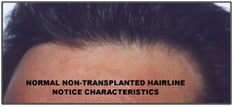
NORMAL NON-TRANSPLANTED HAIRLINE
This is Dr. Shapiro’s own hairline which has not been transplanted so we know it is a normal hairline. Dr. Shapiro studied this and hundreds of other natural hairlines to understand recurrent characteristics that make a hairline look natural.
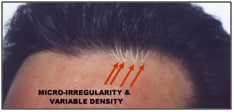
MICRO-REGULARITY ALONG ANTERIOR BOARDER
All hairlines have variable high alternating with low-density spots along the anterior border of the hairline. This is called Micro-Irregularity.
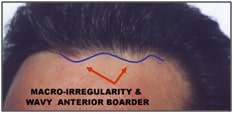
MACRO- IRREGULARITY AND A WAVY ANTERIOR BOARDER
All hairlines have an undulating non- linear anterior boarder. This is called Macro -Irregularity. A straight line is abnormal and looks unnatural.
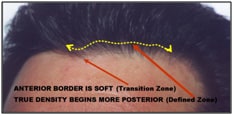
SOFT, ILL DEFINED TRANSITION ZONE
All hairlines start soft and build density gradually over a few millimeters to a centimeter A hairline that looks like A harsh wall is unnatural.
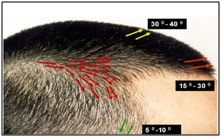
FOLLOW THE NATURAL ANGEL AND DIRECTION OF HAIR
Hair changes direction and angle as it moves around the head. It is important to follow the natural angle and direction to create an undetectable look.
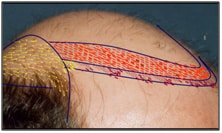
ILLUSTRATION OF PATTERNS
The temporal corners (yellow) have to be placed like a fan changing direction and angled around the corner. The transition zone should have micro and macro irregularity made up of 1 hair graft that leads to a soft wavy hairline. The area behind this should become more dense using larger 2 and 3 hair grafts (Red Zone).
EXAMPLES OF NATURAL HAIRLINE CREATION
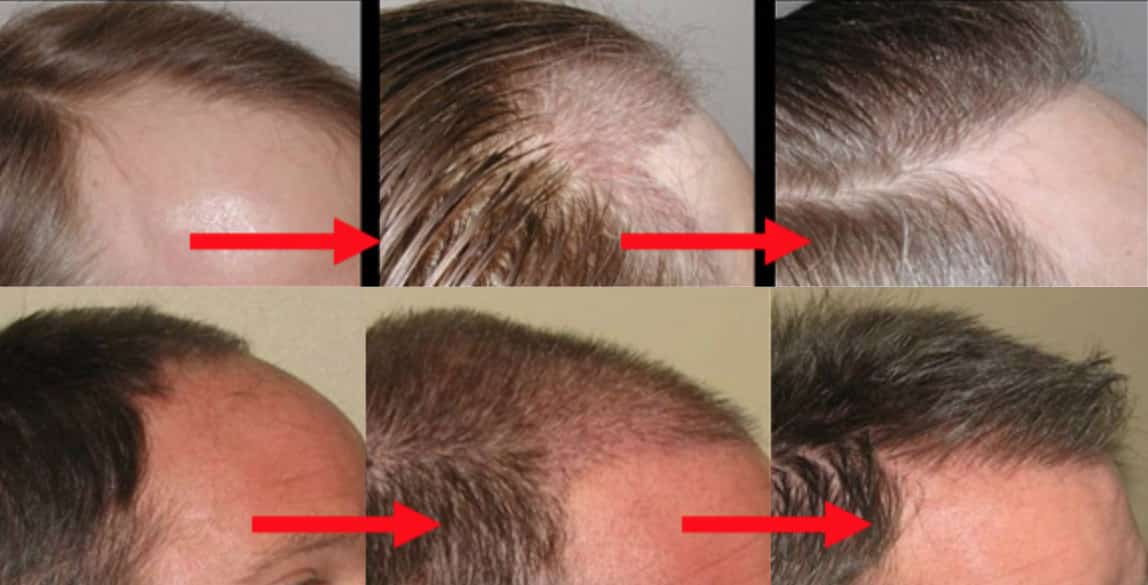
As seen in the photos, the transplantation has effectively created naturalness, and hairs are rightfully placed to follow the direction of the hair as it naturally grows.
SMG is considered one of the world leaders in hairline design as evidenced by the distinction of being asked to run the Hairline Workshop at the ISHRS annual meeting every year for the past 10 years.

